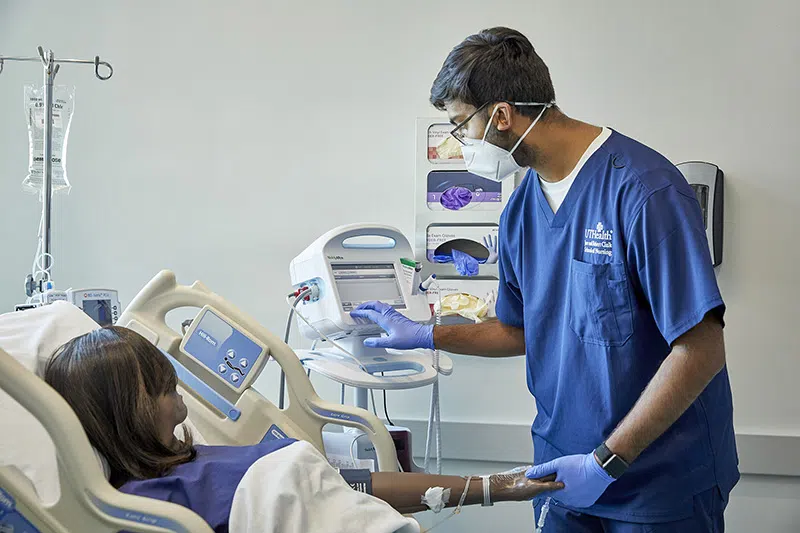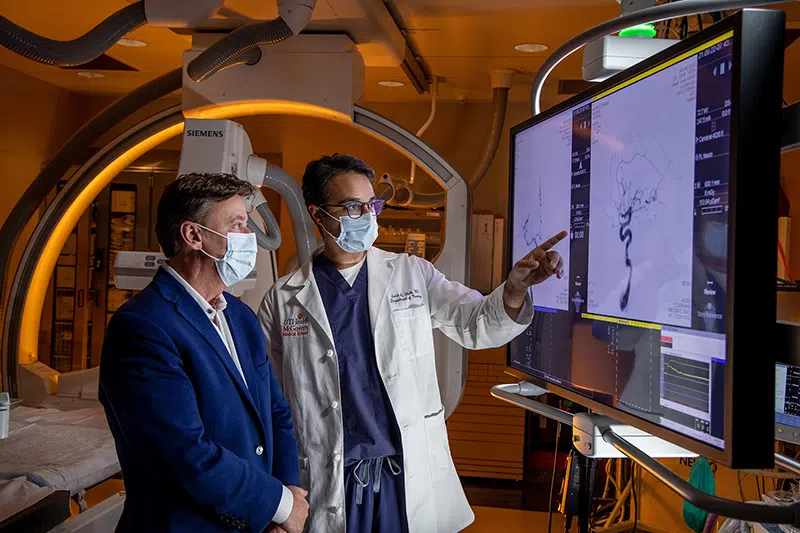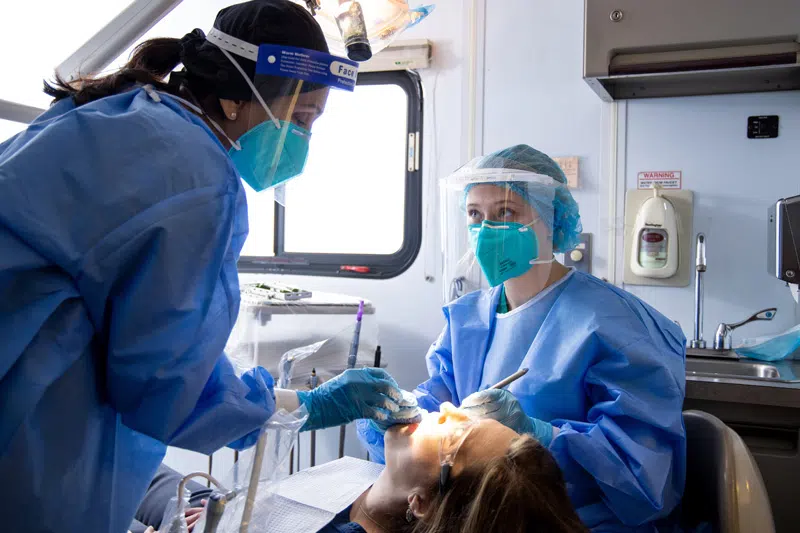POLICY
Approval by IRB must be obtained prior to clinical use of a Humanitarian Use Device (HUD) at UTHealth. A request to use an HUD shall be reviewed and approved at a full board IRB meeting; however, subsequent continuing review may be conducted by expedited procedures, unless the IRB determines that full board review should be performed.
Key Terms
A Humanitarian Use Device (HUD) is a medical device intended to benefit patients in the treatment or diagnosis of a disease or condition that affects or is manifested in not more than 8,000 individuals in the United States per year.
A Humanitarian Device Exemption (HDE) is an application for FDA approval to market a device as an HUD. An FDA-approved HDE authorizes the HDE applicant to market the HUD in accordance with approved labeling and indication(s) for use, and healthcare providers may use the device clinically to treat or diagnose patients. FDA approves an HDE on the condition that the device will not expose patients to an unreasonable or significant risk of illness or injury, and the probable benefit to health from use of the device outweighs the risk of injury or illness from its use, taking into account the probable risks and benefits of currently available devices or alternative forms of treatment; the device would not be available to a person with the disease or condition in question without the HDE, and no comparable device, other than another device approved under an HDE or Investigational Device Exemption (IDE), is available to treat or diagnose the disease or condition; and the device is designed to treat or diagnose a disease or condition that affects not more than 8,000 individuals in the United States per year.
Key Differences Between an HUD Approved Via HDE and a Device Approved Via Premarket Approval (PMA): An HUD approved by HDE is exempt from the requirement of establishing a reasonable assurance of effectiveness, which is required for PMA approval; use of HUDs in clinical care of patients at a facility must receive prior approval from either an IRB or an appropriate local committee, which is not required for PMA-approved devices; and for HUDs, medical device reports (MDRs) should be submitted to the IRB of record or appropriate local committee (in addition to submitting MDRs to FDA, as for PMA-approved devices).
Clinical Investigation means research involving one or more subjects to determine the safety and/or effectiveness of a device.
Serious Injury means an injury or illness that is life-threatening, results in permanent impairment of a body function or permanent damage to a body structure, or necessitates medical or surgical intervention to preclude permanent impairment of a body function or permanent damage to a body structure.
PROCEDURE
Submission for Clinical Use of an HUD: The physician will submit a CPHS application via iRIS, as well as:
- A letter from the sponsor which contains the following information:
- The generic and trade name of the device
- The FDA HDE number
- The date of HUD designation
- The indications for use of the device
- A description of the device
- Contraindications, warnings, and precautions for use of the device
- Adverse effects of the device on health
- Alternative practices and procedures
- Marketing history
- A summary of studies using the device
- The product labeling
- A patient information packet that may accompany the HUD
- A sample consent form for the use of the HUD in clinical care, if required by the IRB
- A summary of how the physician proposes to use the device, including a description of any screening procedures, the HUD procedure, and any patient follow-up visits, tests, or procedures
Review of Clinical Use of an HUD: The IRB will review the submission for clinical use of an HUD at a convened IRB meeting. In reviewing the use of the HUD in clinical care, the IRB should be cognizant that FDA has made a determination that the probable benefits to health outweigh the probable risks for use of the HUD only within its approved indication(s).
The IRB will verify that the documents provided are consistent with the manufacturing labeling and the approved use under the HDE. The IRB will follow the review criteria in 21 CFR 56.111 and elsewhere in part 56, where applicable. The IRB will review the risks to patients that are found in the HDE-approved product labeling, ensure the risks are minimized, and evaluate whether the risks are reasonable in relation to the proposed use of the device at UTHealth. When the IRB is reviewing a request for clinical use of an HUD at UTHealth, it does not make a Significant Risk (SR)/Nonsignificant Risk (NSR) determination because use of a legally marketed HUD to treat or diagnose patients is not a clinical investigation of a device that falls under 21 CFR 812.
The IRB may use its discretion to determine how to approve use of an HUD, including consideration of professionals’ qualifications through training and expertise to use the device. The IRB may specify limitations on the use of the device based upon one or more measures of disease progression, prior use and failure of any alternative treatment modalities, reporting requirements, appropriate follow-up precautions and evaluations, or other criteria the committee determines to be appropriate.
Duration of Approval: The IRB may approve use of an HUD for a period of one year or less. The IRB may grant a generalized approval for clinical use of an HUD at UTHealth, provided the use of the HUD is within the terms of the generalized approval. In certain circumstances the IRB may require review and approval of individual uses of an HUD. The IRB may approve use of the HUD, for instance, without any further restrictions, under a protocol, or on a case-by-case basis.
Informed Consent: The IRB will usually require prospective informed consent for clinical use of an HUD. If available, a patient information packet that incorporates information to assist a patient in making an informed decision about the use of the HUD in clinical care should include the following information, if applicable:
- A statement that the device is a HUD and effectiveness for the labeled indication has not been demonstrated.
- An explanation that the HUD is designed to diagnose or treat the disease or condition described in the HDE labeling and that no comparable device is available to treat the disease or condition.
- A description of any ancillary procedures associated with the use of the HUD, a description of the use of the HUD, and all known risks or discomforts.
- An explanation of the postulated mechanism of action of the HUD in relation to the disease or condition.
The device labeling must include the following statement: “Humanitarian Device. Authorized by Federal law for use in the [treatment or diagnosis] of [specify disease or condition]. The effectiveness of this device for this use has not been demonstrated.”
Continuing Review of Clinical Use of an HUD: The IRB that performed initial review of a request to use an HUD clinically must perform continuing review of the HUD use. The IRB may use expedited procedures for continuing review, similar to procedures described in the policy on Expedited Review. At continuing review, the IRB will consider the risk and benefit information available and any medical device reports (MDRs). The IRB may ask the HDE holder for copies of the safety information submitted to FDA in required periodic reports, and in this way, information that could have a bearing on human safety would be considered at the time of continuing review.
Use of an HUD outside of Approved Indication: If a physician wants to use an HUD clinically outside its approved indication(s), the IRB will determine the extent of oversight. The IRB may require that the physician obtain informed consent from the patient and may require additional reasonable patient protection measures are followed, such as devising schedules to monitor the patient, taking into consideration the patient’s specific needs and the limited information available about the risks and probable benefits of the device.
Reporting for Clinical Use of an HUD: Whenever the physician receives or otherwise becomes aware of information, from any source, that reasonably suggests that an HUD has or may have caused or contributed to the death or serious injury of a patient, the physician must report such findings to the FDA and IRB as soon as possible, but no later than 10 working days after the physician first learns of the effect or problem, as per the policy and procedure on reporting unanticipated problems. This reporting is in addition to, not a substitute for, FDA and/or manufacturer reporting requirements in accordance with 21 CFR 803.30. The physician or health care provider must promptly report any FDA action(s) regarding the HUD to the IRB. Modifications to the HUD or the clinical use of the HUD are to be promptly reported to the IRB in accordance with the policy and procedure on Change Requests and Protocol Amendments.
Emergency Clinical Use of an HUD: In an emergency situation, an HUD may be used clinically to prevent serious harm or death of a patient; however, in this situation, the physician and HDE holder must follow the same emergency use procedures described in policy and Individual Patient Expanded Access – Investigational Device. Briefly, in such an emergency situation, the physician shall contact the IRB office with information on the emergency use. The IRB office, after consultation with an IRB Chair, will provide a letter of concurrence for emergency clinical use of the HUD. FDA recommends that the physician submit a follow-up report on the patient’s condition to the HDE holder.
Investigational Use of an HUD: An HUD used in a clinical investigation is subject to the same requirements that apply to all FDA-regulated clinical studies and must be performed under IRB oversight as described in the policy Investigational Devices. Further, if the HUD is being studied for a use other than its approved indication (i.e., off label), then an IDE may be required. If FDA has not already made an SR/NSR determination, then at the initial review the IRB must make an SR/NSR determination for the HUD as used in the study. If SR is determined, then the entity or PI that initiated the study must submit an IDE application to FDA, and the IDE must be approved by FDA before the investigation may begin.
APPLICABLE REGULATIONS AND GUIDANCE
- 21 CFR 814 Part H: Humanitarian Use Devices
- FDA Guidance - Humanitarian Device Exemption (HDE) Program
REFERENCE TO OTHER POLICIES
- Unanticipated Problems Involving Risks to Subjects or Others
- Change Requests and Amendments
- Emergency Use of Investigational Drug or Device
- Investigational Devices
ATTACHMENTS
- Initial Review Panel – Humanitarian Use Device
If you find errors in this document, contact [email protected]
|
Document Number:
|
101-D03
|
|
Document Name:
|
Humanitarian Use Device
|
|
Reviewed by:
|
Executive Director, Research Compliance
|
|
Effective:
|
1 Aug 2008
|
|
Revision History:
|
1 Aug 2011, 1 Jun 2016, 21 Jan 2019, 1 Jun 2021
|
CPHS HELPLINE 713-500-7943
iRIS HELPLINE 713-500-7960
UTHealth’s Compliance Hotline (1-888-472-9868)
IRB OFFICE HOURS Thursdays from 1 to 4pm, via the Teams Room at this link
How can we improve this site?


 Featured Donor
Featured Donor











